2023 RockShox Super Deluxe and Super Deluxe Coil
Reviewer: 6’, 170 lbs / 183 cm, 77.1 kg
Test Location: Washington, Oregon, British Columbia
Test Duration: ~4.5 months
Bolted to: Nicolai G1 & Santa Cruz Hightower
Blister’s Measured Weight:
- Super Deluxe Ultimate Air (230 x 65 mm): 490 g
- Super Deluxe Ultimate Coil (230 x 65 mm, w/o spring): 507 g
- 350 lb spring: 410 g
MSRP:
- Super Deluxe Ultimate Air: $599
- Super Deluxe Ultimate Coil: $549 (shock only); $37 (spring)
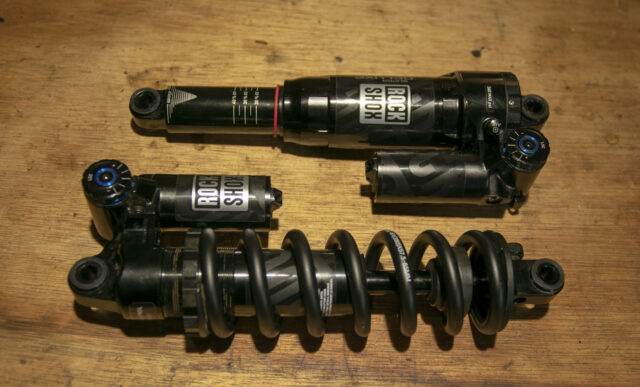
Intro
RockShox gave the core of their suspension a major overhaul this year, launching new versions of the Pike, Lyrik, and ZEB forks, along with new versions of the Deluxe and Super Deluxe rear shocks, in both air and coil versions. Having now spent several months on both the air and coil Super Deluxe Ultimate, the brand’s more downhill-oriented Trail / Enduro / DH shock, RockShox has done a nice job of making a pair of high-performing, easily tunable rear shocks.
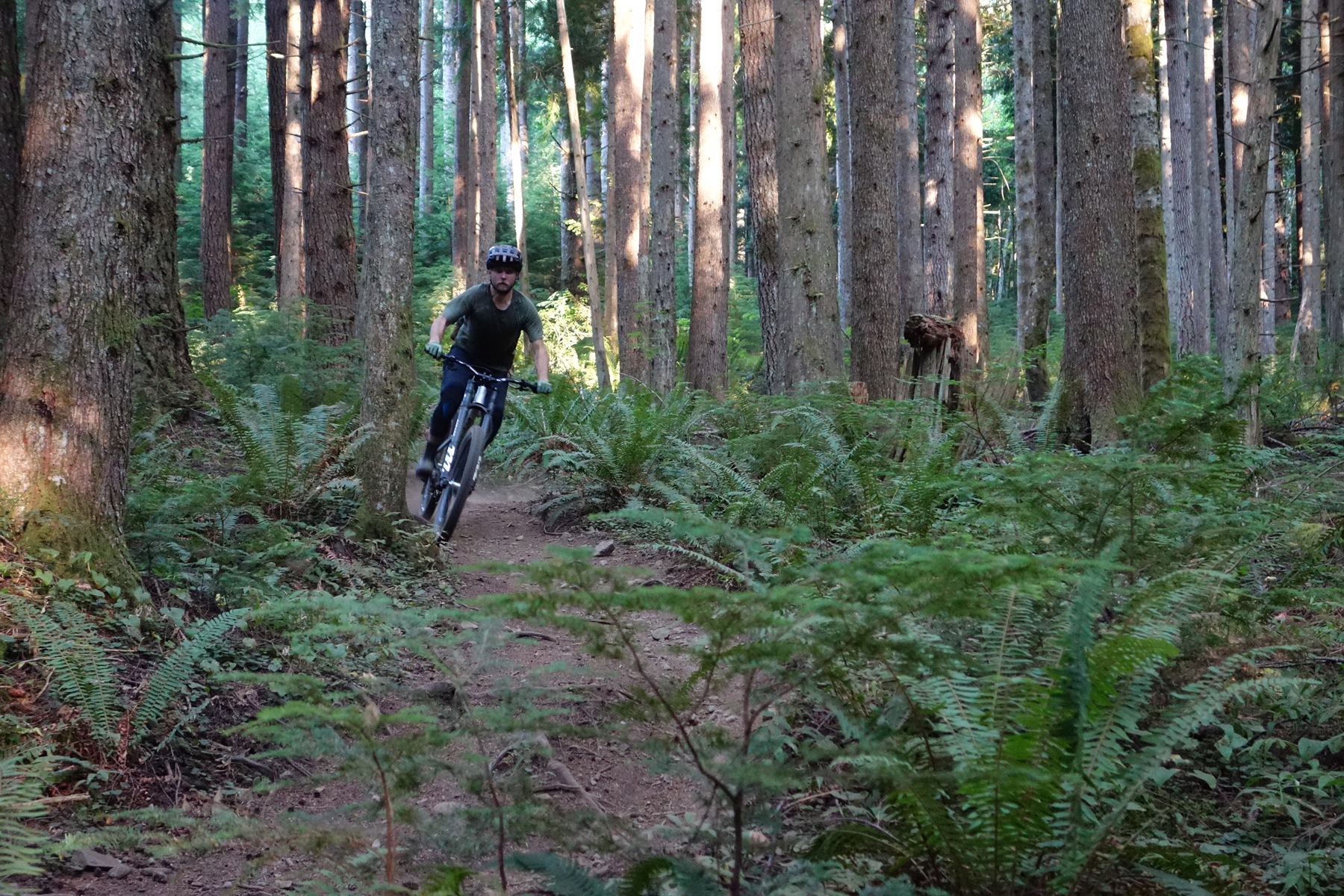
Some Background Info
RockShox offers the Super Deluxe in both air- and coil-sprung versions, and in a variety of configurations with different feature sets and adjustments. You can check out our 2023 RockShox lineup article for all the details on the new shocks, but here we’re going to focus on the Super Deluxe Ultimate and Super Deluxe Ultimate Coil, as configured for my Nicolai G1, with the hydraulic bottom-out (HBO) feature on both, and with the “Linear” air can in the case of the air shock.
The damper design of the two is largely the same (though the details of the hydraulic bottom-out circuit differ, and the Coil version features an external HBO adjustment — again, check out our First Look for the rundown) and I’ve spent a lot of time with both versions on the Nicolai G1, plus the air version on a Santa Cruz Hightower, and have come away impressed.
When RockShox launched their new suspension lineup earlier this year, RockShox’s Chris Mandell and I set up my Nicolai G1, which serves as my long-term parts-testing bike, with the (excellent) new ZEB and a Super Deluxe Ultimate for review. The fork was immediately impressive, and the shock showed quite a bit of promise but didn’t feel like the best fit for the bike (which, to be fair, was effectively designed around a custom EXT Storia coil shock). The Super Deluxe felt consistent and predictable, and the damper felt like it was doing its job nicely, but it also felt like the G1 just wasn’t the best fit for an air shock of any sort.
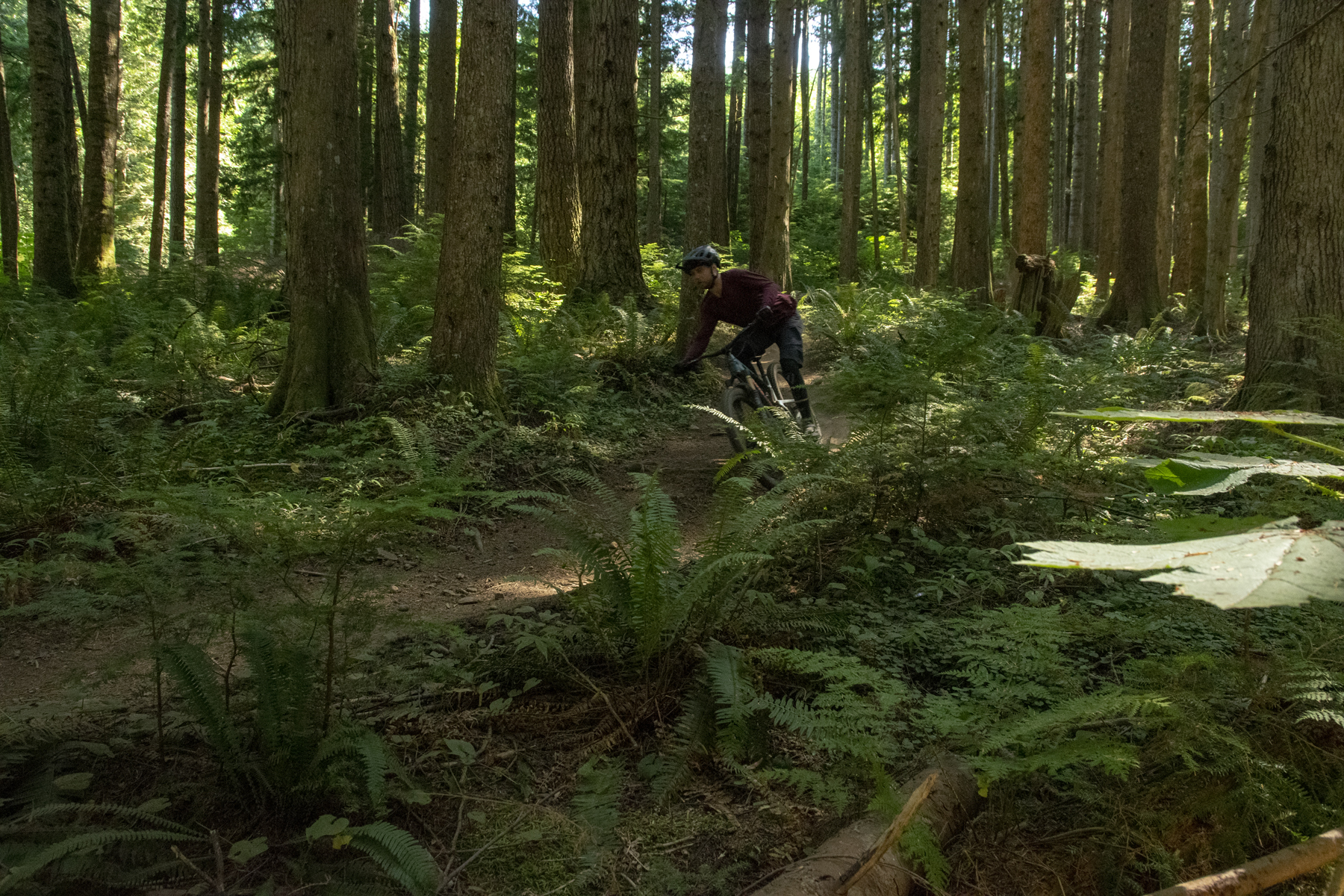
For one thing, the Super Deluxe Air is only compatible with the G1 in the bike’s shorter-travel setting; in the longer-travel one, the rocker link fouls on the shock stanchion about halfway through the travel. This is more of an issue with the frame than the shock, and having looked into it some more, it turns out that quite a few other air shocks have a similar limitation on the G1.
Between not being able to use the longer-travel setting and the fact that the G1’s linkage is quite progressive, the Super Deluxe Air never felt like the best fit for that bike — but again, I’d put that down to the frame itself, rather than any sort of shortcoming on the shock’s end. Irrespective of shock choice, I’ve generally preferred the long-travel setting on the G1; the extra travel feels welcome, given the bike’s intentions, and the slightly lower dynamic ride height in the rear (due to extra sag / suspension movement) makes the bike feel a bit more balanced and composed in faster, rougher sections in particular. So I was quite excited to try out the coil version, and after a couple of months with the Super Deluxe Air, RockShox set me up with its coil-sprung sibling so I could compare the two.
In the midst of all that, I also spent a lot of time on the Super Deluxe Ultimate Air that came stock on our Santa Cruz Hightower test bike, and that combination clicked much more promptly. The Hightower is both shorter travel and significantly less progressive than the G1, and the version of the Super Deluxe spec’d on the Hightower also forgoes the optional hydraulic bottom-out feature, deciding (correctly, in my opinion) that the frame itself was progressive enough to take care of things.

Super Deluxe Ultimate Air
After a little fine-tuning on the Hightower, I settled into running the Super Deluxe with both compression adjusters at the “0” position (i.e., the middle of the range), which equates to one click firmer than Santa Cruz’s recommended baseline for both compression adjusters, and 178 psi in the air spring, very close to baseline for my 170 lb weight. With those settings, the Super Deluxe worked very well. The damper felt consistent and supportive without getting harsh on really sharp impacts; opening up the HSC by one click made the bike feel more plush, but it was blowing through its travel a little more quickly than I would have liked on really high-speed, medium-amplitude chatter (think a big mess of roots at speed).
It’s tough to say for sure, having not directly A/B’d the two on the same bike, but my hunch is that the new Super Deluxe can’t quite match the Fox Float X2 when it comes to small-bump sensitivity. The new Super Deluxe does feel smoother off the top and a bit more plush than its previous version, but I don’t think it fully closes the gap to the Float X2. But the Super Deluxe feels a little more lively without needing to speed the rebound up unduly and is substantially easier to set up — the work RockShox has put into that aspect of the shock has really paid off.
As with the prior-generation Super Deluxe, the climb mode on the new version is notably firm and makes a more dramatic difference in the climbing efficiency of the bike than most other shocks (and this is with the lighter “320 lb” tune on the climb mode; RockShox also offers a firmer 380 lb one). The difference is especially stark in comparison to the Fox Float X2 and DHX2, both of which have consistently featured a very lightly damped climb mode in the dozens of iterations that we’ve ridden at this point.

And I’m all for it. As I’ve said repeatedly on here, there’s no law saying you have to use your climb switch whenever you’re pointed uphill, so I’d much rather have a switch that makes a big difference and turn it on and off as appropriate. Yes, a firmer climb mode such as the one found on the Super Deluxe does compromise compliance and traction to some extent, but on a super technical climb where that feels like a limitation, you can always just turn it off. The Super Deluxe’s climb mode does also open up and starts to move if you really hit something hard, but under more normal climbing conditions, it’s quite firm and composed.
The climb switch knob is somewhat stiff and not the easiest to turn (especially going into climb mode; coming out of it isn’t quite as stiff) but it didn’t give me any major trouble. Particularly on the Hightower, with its low-slung shock, activating the switch while on the bike was a little tricky, but by no means impossible.
And so I was overall impressed with the new Super Deluxe Air, particularly on the Santa Cruz Hightower, which just felt like a better fit for an air shock than the Nicolai G1 on which I first tried the Super Deluxe Air. It’s a consistent, well-rounded, easily-adjustable shock with an especially effective climb mode, and it’s easy to imagine it working for a lot of riders on a lot of different bikes.
When I reviewed the Fox Float X earlier this year, I said that the prior-generation Super Deluxe felt like the best comparison to that shock that I’d been on, and while the new Super Deluxe is definitely still competing with the Float X for use on a range of Trail bikes, it now feels like a more fully-featured, high-performance option. The Float X still works well, is even easier to set up than the Super Deluxe Ultimate, and does still have a slight edge when it comes to small bump sensitivity and plushness. But the Super Deluxe feels a lot more supportive when you start pushing it harder, especially as you start to firm up the high-speed compression adjuster (which the Float X lacks) to deal with bigger, harder impacts.
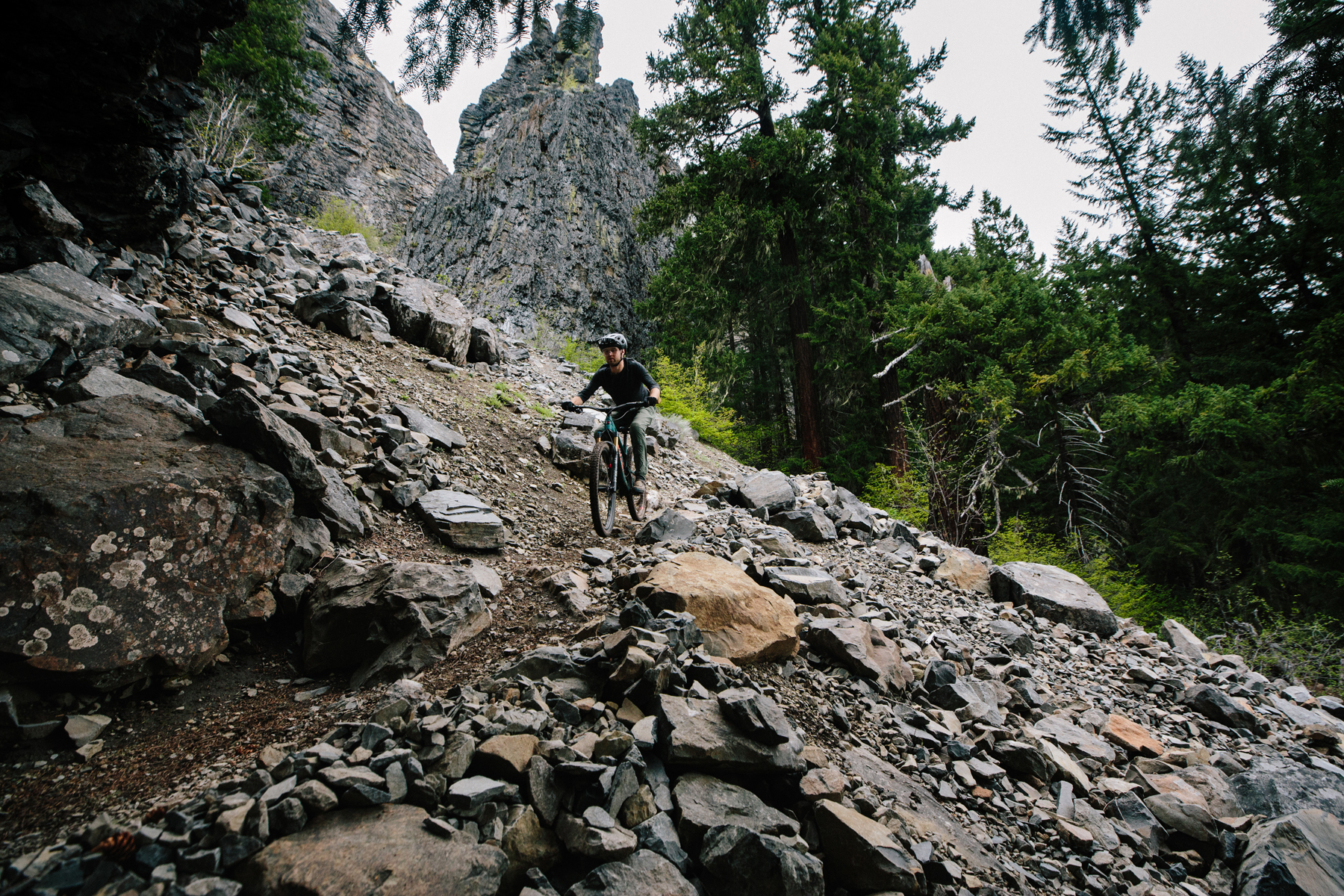
Super Deluxe Ultimate Coil
After spending a little while with the Super Deluxe Air on my G1, RockShox set me up with an identically-tuned version of the Super Deluxe Coil for comparison, and as I’d expected going in, the coil felt like a better match for the long-travel, super-progressive bike. Not only could I use my preferred 175mm-travel setting, but the reduced progression, better midstroke support, and improved small-bump sensitivity all felt like better fits for the bike, and it didn’t take me long to have the Super Deluxe Coil feeling very good.
As with the air-sprung version, the Super Deluxe Coil does an impressive job of balancing having an overall wide range of damper adjustments while still being straightforward to set up. There are only five settings each for the compression adjustments, with each click making a noticeable difference. RockShox’s new system of indexing all the adjustments to the middle of the range and having the compression knobs visually indicate their respective setting does make it easy to find a solid baseline setting (start at the middle “0” setting and go from there).
Discussing rear shock settings is tricky because they’re so dependent on not just the rider’s preferences, style, and the specific bike in question, but also the specific tune on the shock. But on the Super Deluxe Coil on my G1, I wound up running the low-speed compression adjuster at “0” (i.e., the middle of the range), the HSC at +1, and the hydraulic bottom-out fully closed.
The adjustable hydraulic bottom-out feature on the Super Deluxe Coil also makes a big difference in the shock’s performance, and the range of adjustment available is strikingly large. With the HBO in one of the lighter settings, I was definitely noticing some significant bottom-out events on harsher, flatter landings, in particular; firming up the HBO circuit made a big difference in just making those events disappear. It’s not so much that I notice the HBO doing its thing as I notice an absence of significant bottom-out harshness — which is just what I want out of it.
In thinking about whether or not to opt for the hydraulic bottom-out feature, it’s worth considering what exactly the HBO feature does. As the name would suggest, the idea is to add some bottom-out control to the shock, by adding additional compression damping in the last 20% of the stroke. But unlike increasing the spring rate / air pressure, or adding volume spacers to an air shock, the HBO dissipates the energy it absorbs as heat, rather than returning it on rebound. So adding HBO increases bottom-out resistance and makes the behavior more damped and controlled at the end of travel; if you want to add bottom-out resistance but make the bike feel more lively and poppy at the same time, you’re probably better off doing it through the spring instead.
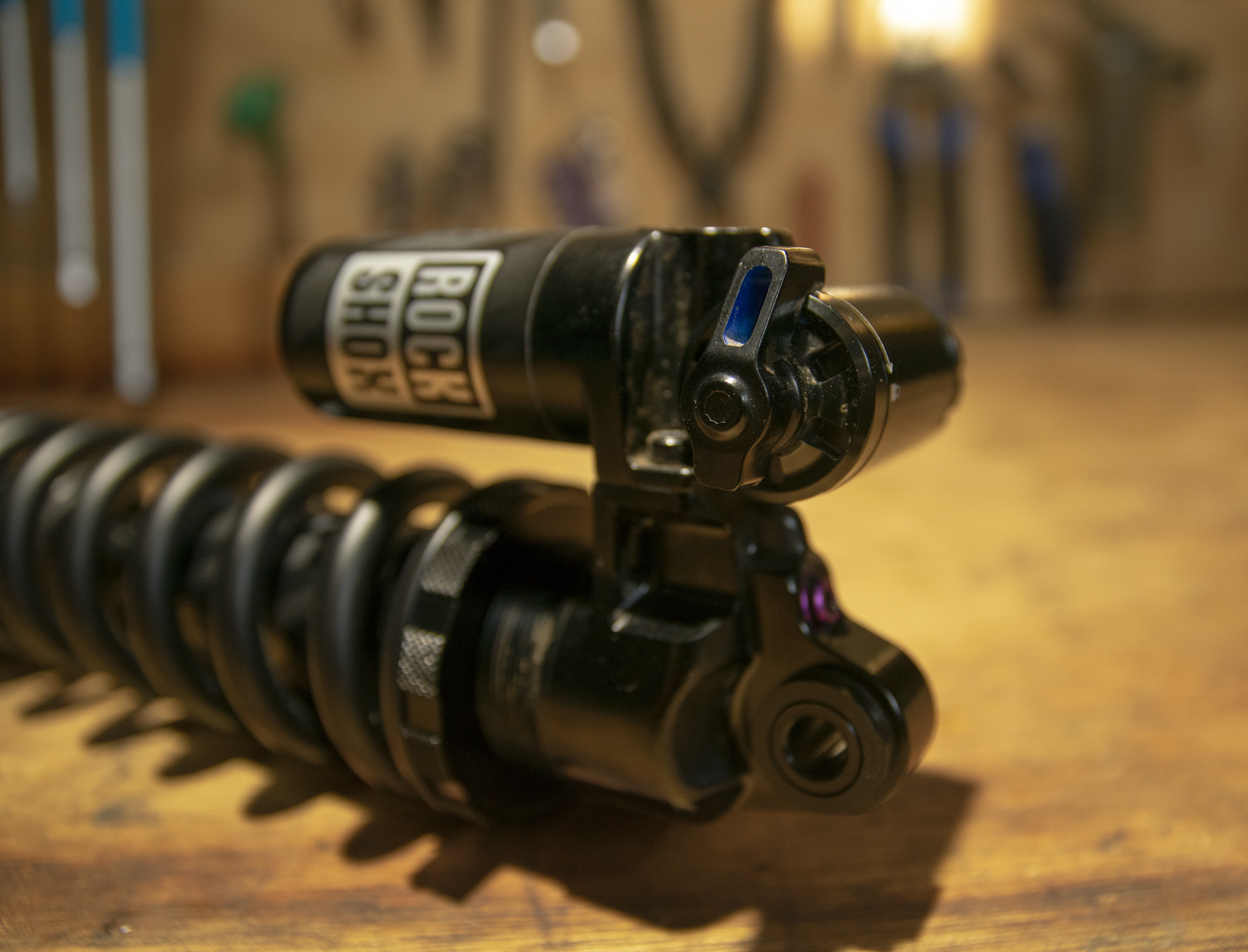
In the case of the Super Deluxe Coil, I think most rider and bike combos will be better off with the HBO feature, both because coil shocks are inherently less progressive than air ones, and because the HBO on the coil shock is externally adjustable, and feels very light at the open end of the adjustment range. Things are less cut and dried with the air version. Not only is there more control over bottom-out resistance via volume spacers in an air shock, but they’re also inherently more progressive and (very generally speaking) need less help with bottom-out resistance. The more you want to make the bike harder to bottom out and make it feel more composed and controlled near the end of travel, the more sense the HBO feature makes.
The notably firm (in a good way) climb mode from the Super Deluxe Air carries over to the coil version, and in that respect and most others, they really do feel like versions of the same shock that are separated by just the spring design — which makes sense, given their similar overall damper designs.
It would be nice to see RockShox offer 25 lb/in increment springs, as a lot of other brands have started doing, instead of the 50 lb/in jumps that they currently offer. The 350 lb spring that I’ve been riding is working well for me (RockShox’s Chris Mandell and I also tried a 400 lb spring when we were first setting up the shock but agreed it produced too little sag), but I’m also running the HBO fully closed to compensate, and would be interested in trying a 375 lb spring if one was available. And unfortunately, RockShox uses a larger spring inner diameter than a lot of other brands, making it difficult to try a spring from another manufacturer. Especially for lower spring rates, 50 lb is quite a large percentage jump from one rate to the next, and there are definitely going to be folks who wind up caught in between spring rates.
[EXT’s springs do fit, diameter-wise, but are too short for the Super Deluxe to preload since the threaded portion of the shock body is relatively short. A 75 mm stroke EXT spring and a small spacer should work on the 65 mm stroke SuperDeluxe that I’ve been testing, but I haven’t managed to get one set up.]
Speaking of EXT, I’ve also run their excellent Storia V3 on the G1, and while the Super Deluxe Coil can’t quite match the EXT in terms of just how effortlessly supple it is off the top, I’ve been impressed with how well the Super Deluxe held its own against the Storia. Both shocks do a very good job of performing consistently and predictably, and in particular, both can be run with fairly firm compression damping without feeling harsh or spiky on really high-speed, chattery impacts.
Compared to the Storia V3, the Super Deluxe manages to be both easier and more intuitive to set up, while also having a wider range of damper adjustments available (especially on rebound). On the other hand, the Storia is quite a bit lighter, with both the shock itself and EXT’s lightweight springs contributing to the weight savings, and does have finer adjustment steps on the compression damping settings for folks who really want to dial things in.
The Storia is outstanding, especially for riders who have a clear idea of how they want their suspension to perform, and are willing to put some time into fully dialing things in, but the Super Deluxe doesn’t feel like a huge performance drop-off and is a great option for riders who either find that effort to dial in their setup to be intimidating or simply don’t want to pay the premium price for the Storia. The Storia is also relatively noisy, with a fair bit of rebound slurp, in particular. I can’t say that it’s ever really bothered me, but the Super Deluxe is near silent, for folks who do care.
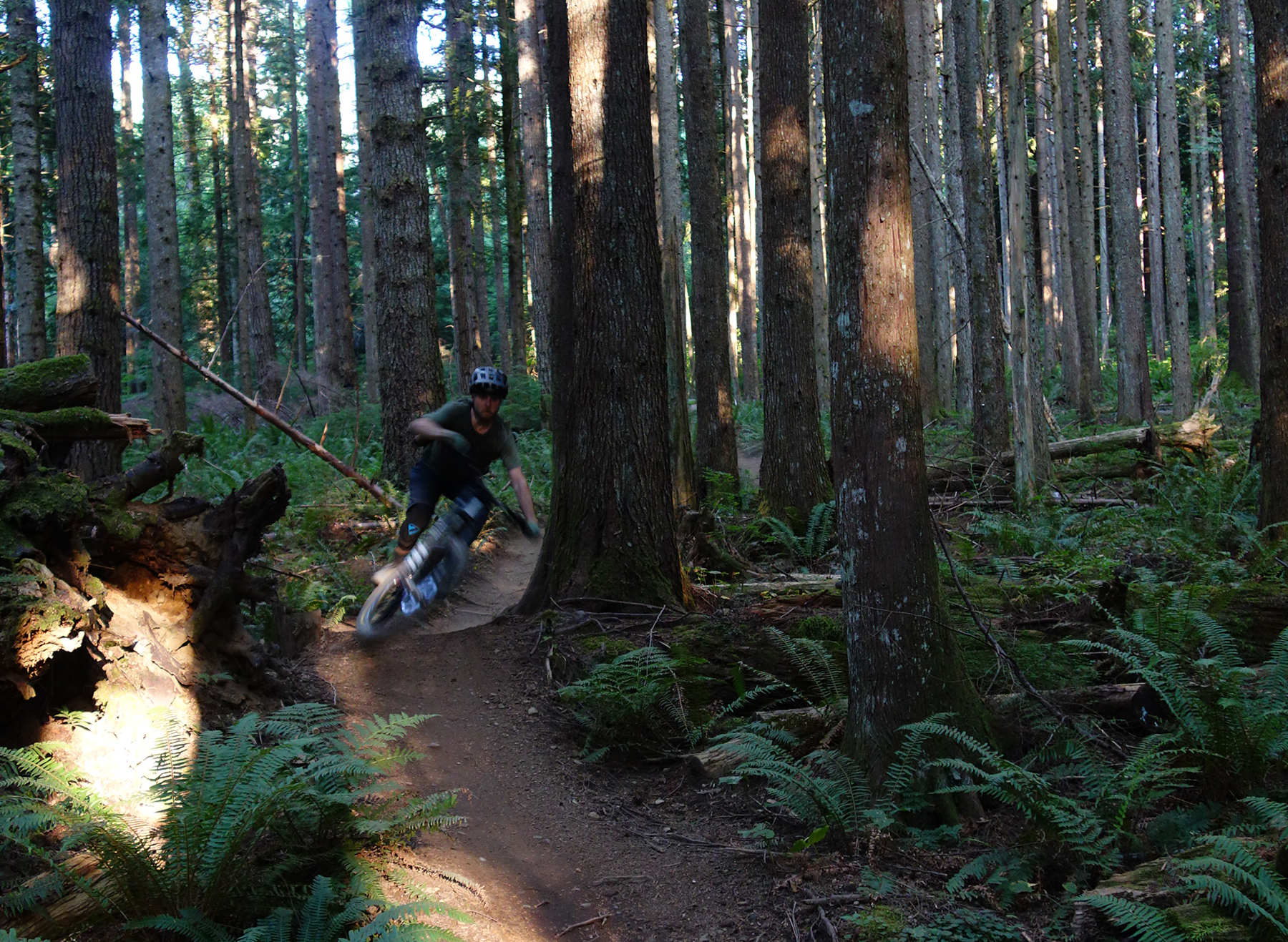
Who’s It For?
Both versions of the Super Deluxe are very high-performing shocks that are especially easy to set up, particularly given that they also have a fairly wide range of damper adjustments and are tough to get feeling too far out of whack (at least if you’re starting with a reasonable base tune for the bike in question). The very most obsessive fine-tuners might want finer resolution on the compression damping adjustments, but I think RockShox has done a good job of balancing the total adjustment range with ease of tuning, and most people aren’t going to be left wanting finer increments between settings.
RockShox is covering a lot of bases with the Super Deluxe, with the pair of shocks intended for use on mid-travel Trail bikes through full-on DH rigs — basically, everything where downhill performance is ahead of minimal weight in the list of priorities. And especially with the newly-adjustable high-speed compression and optional hydraulic bottom-out feature, it feels up to the task. The Super Deluxe Air is, of course, heavier than most straight-body air shocks, but it still comes in at a reasonable weight and performs a lot better on the way back down than its lighter counterparts, and the Super Deluxe Coil is there for the folks who want to take that step up at the expense of a bit more weight.
The choice between the air and coil versions breaks down in typical fashion: the air shock is lighter, more fine-tuneable, and more progressive (even with the linear air can and no volume spacers); the coil has better small-bump sensitivity, a little more midstroke support, and is both more consistent in its performance across big temperature swings and doesn’t require periodic air pressure top ups. And of course, compatibility of the air and coil versions will vary depending on the frame you’re hoping to bolt them to, so check with your frame manufacturer if you’re not sure.
Bottom Line
The prior-generation Super Deluxe was already a good shock, but RockShox has made some major improvements to the new version, and it’s in the running for the best bang-for-buck option going for a great performing Trail/Enduro/DH shock at the moment. The new high-speed compression adjuster is welcome, as is the (optional) hydraulic bottom-out circuit, and the new damper design is smoother, more consistent, and less spiky at high speeds than the old one. Small-bump sensitivity is also improved, particularly on the air version.
The new Super Deluxe pulls off an impressive combination of being fairly tunable, with a fairly wide range of adjustment, while also being relatively easy to set up. It’s both a very good OE-spec shock that a lot of people will get along with out of the box and a worthy aftermarket upgrade for plenty of folks.

The usual superbly detailed review. Kudos.
RS spring jumps @50 pounds in the lower ranges are tough — reminds me of the current SRAM gearing jump of 42 to 52. Ugh. And why can’t shock mfgs agree on an ID? Holy reminders of the myriad BB standards floating around.
Personal preference on big bike shocks is for a fairly gentle “climb” setting. I want to be able to benefit from it on steep, chunky climbs, and always find RS too stiff. More of a forest road climb setting.
Thanks für the Review
Im waiting for a super deluxe ultimate with a bearing eyelet beeing available aftermarket. Im sick of sending my x2 to fox because of air in the oil. I would love to get a 2023 SD instead..
Super alloy racing is one company that makes 25lb increment springs for Rockshox, however they are quite hard to find. They are also significantly lighter than the rockshox springs which is nice.
FYI Fluid Focus in the US has them in stock and is their main distribution channel
Excellent review as always. I’ve been pondering between the storia and the new SD coil and this gives some new insight to that decision. What tune did you have on the super deluxe coil? I have been hearing good things about the progressive rebound option but can’t seem to find the it anywhere.
Of you know a Tuner WHO will Just give you a retune, ie shim configuration , For you, your rising Style and Bike. Then IT should be even stellar and still super price Tag. I have a Tuner in Germany who tkaes less than 100 Euro For Complete custom retune and soome Forum Guys Take around 50. That would make the sd a perfekt fit With No Need For the storia.
By the way,there is a new Premium custom shock from novyparts france which only Costs 649 Euro,is Made in france,completely serviceavle at Home, uses usual Norm seals you can get everywhere,has hsc,LSC,LSR and hydraulic bottom Out completely tailored to your weight,Bike and You. Even the length ist completely customizeable. Only drawback NO CLIMB SWITCH yet. Bit Not everybody needs that. So it would come down to preference and If you Like that IT IS Not priduced cheap in asia
Any thoughts on Super Deluxe vs Fox DHX? They’re in the same price range.
What is the diameter of the damper shaft on the new rock shox super Deluxe coil? I’ve tried to look everywhere and can’t find it because I need one that is very strong because my old Fox DHX2 is only 9 mm and their prone to break with my yoke style suspensions on my 2020 stumpjumper. I need a strong thick one. Please let me know.
It’s a 1/2” damper shaft.
More to the point, RockShox expressly condones running the 2023+ SD coil on almost every yoke-equipped bike out there. The only two exceptions they cite are the Commencal Meta Power TR and the Specialized Kenevo.
I read the Rockshox website and they say only the 2023 coil with steel shaft is compatible.
That note about the steel shafts is new, but it’s only in reference to the couple of specific bikes where the normal one isn’t approved. The standard 2023+ shock is approved for most bikes, even with yokes.